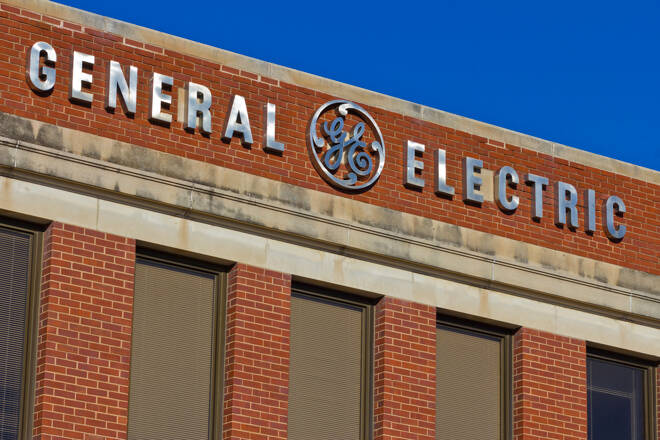Advertisement
Advertisement
General Electric Q2 Loss Widens; Target Price $3 in a Worst-Case Scenario
By:
General Electric reported a wider-than-anticipated quarterly loss of $2.2 billion in the second quarter, compared to a loss of $61 million during the same period a year ago, as coronavirus wrecked its aviation business, sending its shares down over 4%.
General Electric Co, a globally diversified technology and financial services company, reported a wider-than-anticipated quarterly loss of $2.2 billion in the second quarter, compared to a loss of $61 million during the same period a year ago, as coronavirus wrecked its aviation business, sending its shares down over 4%.
Following this release, the Boston-based industrial conglomerate’s shares closed down 4.35% at $6.59 on Wednesday, down over 40% year-to-date.
General Electric’s revenue declined 24% year-on-year to $17.7 billion in the second quarter and reported a cash outflow of $2.1 billion from industrial operations. The company also suffered a 44% decline in revenues in its aviation business.
“Narrow-moat-rated General Electric had a difficult second quarter. That was expected. GE’s higher-margin businesses within aviation, healthcare, and gas power were more heavily impacted by coronavirus and were down three times relative to the rest of GE Industrial. While we arguably overly anticipated the revenue pressures, we failed to fully appreciate the magnitude of difficulties management faces in excising fixed costs from GE’s business. To that end, we cut our fair value estimate by about 6.5% to $9.90 (from$10.60 previously), said Joshua Aguilar, equity analyst at Morningstar.
“We now expect adjusted EPS of $0.05 for full-year 2020, $0.47 in 2021, and $0.71 in 2022, as well as industrial free cash flow burn of just over negative $2billion for 2020. Our valuation implies a value of roughly 21 times our 2021 earnings expectations. Given the unique challenges in the commercial aerospace industry, we encourage investors to look out to next year’s earnings, despite the clear level of macroeconomic uncertainty (which should be appropriately built into an investor’s margin of safety).”
Executive comment
“Our earnings performance was impacted by the ongoing impact of COVID-19 on our businesses, but Industrial free cash flow was better than our expectations and previously communicated range. We made faster progress on elements within our control, including our targeted cost and cash preservation actions,” said GE Chairman and CEO H. Lawrence Culp.
“We’re working through a still-difficult COVID-19 environment, and while it’s too early to predict the trajectory for the recovery of commercial aviation, we continue to plan for a prolonged return to prior levels of activity. Still, based on what we see today and the actions we’ve taken, sequential improvement in earnings and cash in the second half of the year is achievable. We expect to return to positive Industrial free cash flow in 2021. We are accelerating our transformation to make GE stronger and drive long-term, profitable growth.”
General Electric stock forecast
Eleven analysts forecast the average price in 12 months at $8.22 with a high forecast of $11.00 and a low forecast of $5.00. The average price target represents a 24.73% increase from the last price of $6.59. From those 11, five analysts rated ‘Buy’, six analysts rated ‘Hold’ and none rated ‘Sell’, according to Tipranks.
Deutsche Bank lowered its target price to $6.51 from $7.4, while UBS raised its target price to $8.5 from $8. Morgan Stanley target price is $8 with a high of $13 under a bull scenario and $3 under the worst-case scenario.
We think it is good to sell at the current level and target at least $5 in the short-term and $3 in a worst-case scenario as 100-day Moving Average signals a strong selling opportunity.
Analyst comment
“While we view Aviation as a best-in-class franchise and see long-term upside on shop visits growth, we see a scenario where engines are cannibalized for available flight hours through 2021 and that maintenance gets deferred until 2022,” Joshua Pokrzywinski, equity analyst at Morgan Stanley said.
“Tail risks from Power, pension, and Long-Term Care are declining as 2021 brings a wall of cash and strong improvement in risk/reward. We see a clear path to ~2.0x Industrial Net-Debt/Ebitda in 2020, and as cash flow ramps in 2021 and beyond, we see a broadening set of strategic opportunities,” he added.
About the Author
Vivek Kumarauthor
Vivek completed his education from the University of Mumbai in Economics and possesses stronghold in writing on stocks, commodities, foreign exchange, and bonds.
Advertisement
